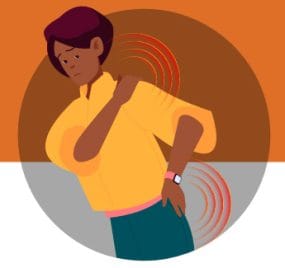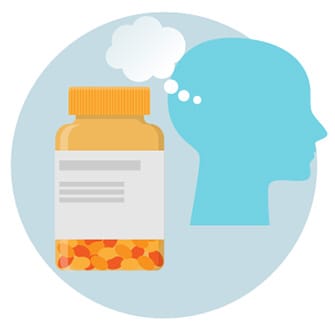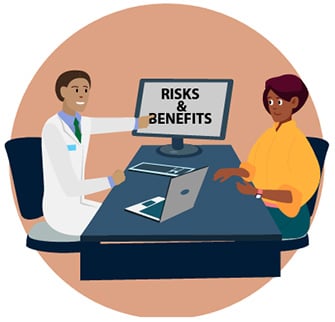What to know
This Steps to Better Health fact sheet provides easy-to-read information for people with sickle cell disease (SCD) about managing chronic pain.

Overview
If you have sickle cell disease (SCD), you may experience chronic pain, which is pain that lasts most days for 6 months or more. Pain management looks different for everyone. It is important that you and your healthcare provider work together to make decisions about the best treatment for you.
Know your options for treating pain.
Many options for pain management are available. If you have SCD and experience chronic pain, talk to your provider about the following options:
- Medicines shown to relieve chronic pain, including these:
- Serotonin and norepinephrine reuptake inhibitors (SNRIs), such as duloxetine and milnacipran. Some of these SNRIs are also used to treat depression.
- Tricyclic antidepressants, such as amitriptyline and nortriptyline.
- Gabapentinoids, such as gabapentin and pregabalin. These medicines can also treat seizures (convulsions), so they are sometimes called anticonvulsants.
- Nonsteroidal anti-inflammatory drugs (NSAIDs), such as ibuprofen and naproxen.
- Opioids, such as oxycodone, hydrocodone, and morphine. However, it is important to consider both the benefits and risks of opioid therapy (see below for more details).
- Serotonin and norepinephrine reuptake inhibitors (SNRIs), such as duloxetine and milnacipran. Some of these SNRIs are also used to treat depression.
- Cognitive behavioral therapy, a psychological, goal-directed approach to alter physical, behavioral, and emotional responses to pain and stress.
- Other therapies, such as acupuncture and massage.

Know the risks and benefits of opioids.
Long-term opioid therapy (LTOT), or long-term use of opioids, such as oxycodone, hydrocodone, and morphine, can be prescribed by providers to treat moderate to severe pain but can also have serious risks and side effects. Have detailed discussions with your provider about whether LTOT is right for you. Consider the following scenarios:
- If you recently developed chronic pain, LTOT is not suggested unless the pain does not respond to other therapies.
- If you are functioning well on LTOT, work with your provider to make decisions about the risks and benefits of continuing LTOT.
- If you are functioning poorly on LTOT, continuing LTOT is not suggested.
Learn more about managing pain without opioids>>

Visit the "Sickle Cell Disease: Steps to Better Health" toolkit available here.
This information is based on ASH SCD Guidelines: Management of Acute and Chronic Pain.
